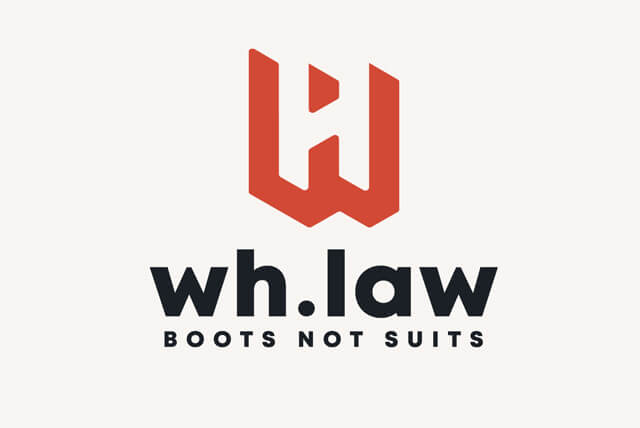Experiencing pushback at work after reporting an issue? You’re likely encountering retaliation in the workplace—an unlawful act that requires immediate attention. Our article cuts through the complexities to provide you with a clear understanding of your rights and actionable advice on how to respond effectively.
Key Takeaways
- Workplace retaliation occurs when an employer punishes an employee for engaging in legally protected activities and can range from subtle actions like micromanagement to overt ones like termination.
- Federal and state laws, including Title VII of the Civil Rights Act and the Americans with Disabilities Act, protect employees from retaliation and agencies like the EEOC enforce these protections.
- If you suspect retaliation, document all related actions, follow internal reporting procedures and consider seeking legal advice to build a strong case and understand potential remedies.
Defining Workplace Retaliation
Ever felt that your employer punished you for standing up against workplace discrimination or harassment? If so, you might have been a victim of workplace retaliation, a legally reprehensible act where an employer punishes an employee for participating in legally protected activities. This punishment can take different forms, from denied promotions and raises to a hostile work environment following a report of discrimination or harassment.
A retaliation claim usually consists of three parts:
- Opposition to discrimination claims
- Suffering adverse action
- Proving that the employer took this action with the intent to deter you from opposing discrimination or participating in the complaint process related to retaliation claims.
Understanding how retaliation manifests is crucial for employees, as it can have a chilling effect on their willingness to speak out against employment discrimination or harassment.
Types of Retaliation
Retaliation can wear many masks. It might show up as a demotion, where your status is lessened, your responsibilities are limited, or your salary, commission, or bonuses are reduced. You could also be passed over for a promotion or raise, especially if this occurs after you’ve engaged in protected activities.
Furthermore, retaliation can take the form of:
- harassment, including sexual harassment
- undeserving lower performance evaluations
- verbal or physical abuse
- denial of opportunities for educational benefits or attendance at seminars
- exclusion from meetings or social events
- excessive micromanagement
- subtle changes like salary reductions
- reassignment of roles
- termination
These practices can indicate retaliatory behavior.
Protected Activities
Protected activities are those lawful actions that shield you from retaliation. These include:
- Reporting harassment, discrimination, or retaliation
- Filing claims
- Providing evidence in investigations
- Participating in proceedings
In addition, employees are protected when:
- Requesting religious or disability accommodations
- Reporting illegality
- Filing workers’ compensation claims
- Serving as witnesses in cases against their employer
Even if you report unlawful discrimination internally, you are protected, provided you have a reasonable and good faith belief in its illegality.
Legal Framework for Addressing Retaliation
Thankfully, there are federal and state laws that protect employees from retaliation. For instance, Title VII of the Civil Rights Act, a federal law, and the Americans with Disabilities Act prohibit retaliation against employees for participating in protected activities related to equal employment opportunities.
Moreover, laws like the Equal Pay Act and the Fair Labor Standards Act provide broad coverage against retaliation concerning potentially discriminatory wages, affecting virtually all employers. Notably, this protection spans across applicants, current employees, and former employees, reinforcing a comprehensive scope under the EEO laws. In this context, it is crucial for employers to uncover potentially discriminatory wages and address them accordingly.
Equal Employment Opportunity Commission (EEOC)
The EEOC plays a pivotal role in enforcing laws that protect individuals from retaliation for engaging in protected activities, such as making a discrimination complaint or participating as a witness in an EEO investigation or lawsuit.
Interestingly, you are protected against retaliation by the EEOC even when you participate in its investigations or lawsuits, irrespective of the original discrimination claim’s validity. If you believe you have faced retaliation, you can officially file a Charge of Discrimination with the EEOC.
Whistleblower Protections
Whistleblower protections safeguard the brave individuals who report breaches of workplace standards affecting public safety, environmental safety, and government transparency. These protections cover a variety of laws, including environmental protections, corporate fraud, public safety violations, and abuses resulting in wasteful spending of tax dollars or violation of public trust.
Several U.S. Department of Labor agencies enforce these whistleblower protections, including OSHA for workplace safety and health, MSHA for mining industry safety and health, and VETS for veterans’ employment rights. Importantly, employees are protected from retaliation when they file complaints in good faith, engage in certain protected activities, and participate in investigations or lawsuits.
Recognizing Signs of Retaliation in the Workplace
There’s no denying that retaliation can be subtle and hard to pinpoint. However, certain signs can raise red flags. You might notice a negative change of behavior from coworkers or superiors toward you after an EEO allegation. Other subtle signs could include:
- being assigned less favorable job tasks or shifts
- schedule modifications causing hardship
- other changes in job responsibilities that are detrimental to you.
In more overt cases, you might face:
- open bullying or harassment from peers that’s encouraged by employers after a complaint
- excessive negative job performance reviews, especially if you had a history of favorable feedback
- being singled out to do more work over colleagues without an increase in compensation
These are clear signs of retaliation, especially when they occur in the aftermath of a complaint.
Subtle vs. Overt Retaliation
Now, let’s delve a bit deeper into the difference between subtle and overt retaliation. Subtle retaliation can often masquerade as normal behavior. For instance, excessive micromanagement might seem like normal managerial oversight, but if it noticeably increases after you submit a workplace complaint, it suggests a subtle retaliation.
On the other hand, overt retaliation involves open bullying or harassment. This can also include being systematically omitted from meetings or social interactions, a tactic called the silent treatment.
Impact on Employee Morale
Retaliation doesn’t only affect the victim; it also impacts the overall workplace environment. Retaliation damages the perceived fairness of the workplace, which is crucial for maintaining high employee morale and trust in the organization.
Unjustified negative job performance reviews can impact an employee’s confidence and self-esteem, negatively affecting overall workplace morale. Subtle forms of retaliation, like reduced working hours resulting in less pay, can cause financial stress and reduce an employee’s morale.
Steps to Take If You Suspect Retaliation
If you sense retaliation, don’t fret. There are steps you can take. Start by documenting the allegedly retaliatory behavior and keep track of historical information prior to making a complaint. This includes:
- Dates
- Names
- Descriptions of violations
- Quotes from conversations
Next, here are some steps you can take if you are facing workplace retaliation:
- Talk to your supervisor or HR and ask specific questions about the situation.
- Voice your concerns and explain how you feel you are being retaliated against.
- Consider filing a complaint with your company’s HR department or the appropriate authority.
- It would be wise to seek legal counsel from a workplace retaliation lawyer to understand your rights and the best course of action.
Internal Reporting Procedures
When it comes to internal reporting, the first step is usually to follow your organization’s established procedures. You can usually find these protocols in your organization’s employee handbook or policies.
Managers receiving retaliation reports should maintain confidentiality, refrain from discussing the complaint openly, and avoid actions that could isolate the reporting employee. Remember, improper handling of retaliation reports can damage other employees’ confidence in the complaint process and lead to lower morale due to perceived lack of protection.
Seeking Legal Advice
If you believe you have been subjected to workplace retaliation or wrongful termination, seeking legal advice from an employment attorney promptly is crucial, especially after being fired or suffering significant wage losses. It’s important to know your rights and understand the role of the wage and hour division in such cases.
Rock employment lawyers provide vital services such as:
- conducting independent investigations
- building a strong retaliation case
- handling courtroom procedures
- negotiating settlements
You can find the right employment attorney for employment law claims, such as retaliation, through organizations like the National Employment Law Network, which can locate the right law firms or attorneys based on the specifics of your case.
Building a Strong Retaliation Case
A strong retaliation case is your shield against unjust treatment. It’s supported by evidence such as documented reports of harassment or discrimination made to HR, and copies of any emails, letters, memos, or personal notes related to the complaint.
Building a strong case entails:
- Establishing a clear timeline of the events leading up to and after the retaliation
- Demonstrating the causal link between your protected activity and the employer’s retaliatory actions
- Substantiating your claim with witness statements, your personal credibility, and records of any losses incurred as a result of the retaliation, such as lost wages, benefits, or medical expenses.
Proving Retaliation
Proving retaliation involves demonstrating a causal connection between the reported incident and the adverse action taken by your employer. Establishing that your employer was aware of the protected activity is necessary to prove retaliation.
An example of retaliatory behavior can include when an employee’s manager placed information about the employee’s previous EEO proceedings in her personnel file and communicated that the employee had filed several complaints during reference checks, which was found by the EEOC to be retaliatory.
Remember, even if your underlying complaint was not correct, you can still have a successful retaliation claim if your actions were done in ‘good faith’.
Potential Remedies
If you’re successful in your retaliation lawsuit, you may receive compensation for lost wages, benefits, and other related losses as damages. Additionally, you may be awarded compensation for emotional distress and punitive damages to penalize employer misconduct.
Courts may also order your employer to take corrective or preventive actions to address the root cause of discrimination and prevent its recurrence. For instance, your employer may be required to post notices informing employees of their rights under anti-retaliation laws, ensuring awareness and compliance.
Summary
Workplace retaliation is a complex issue, but understanding its intricacies can empower you to stand up for your rights. From recognizing subtle and overt signs of retaliation to building a compelling retaliation case, this guide has provided you with comprehensive knowledge to navigate this challenging landscape.
Remember, you’re not alone in this journey. Legal aid is available, and there are laws in place to protect you from retaliation. Stand up against workplace retaliation, because everyone deserves a safe, respectful, and fair workplace environment.
Frequently Asked Questions
What are examples of retaliation in the workplace?
Examples of retaliation in the workplace include firing or demoting an employee, reducing their salary or benefits, changing their work schedule, transferring them to a different position, and denying them a promotion or raise. Employees may also face retaliation through the spread of false rumors, negative treatment of their family members, or making their work more difficult, such as purposefully changing their schedule.
What makes a strong retaliation case?
A strong retaliation case requires evidence of workplace discrimination or harassment, followed by a report of the incident, and subsequent adverse actions taken against the employee. It’s important to clearly establish these three elements in order to build a strong case.
What is retaliatory behavior?
Retaliatory behavior refers to an employer punishing an employee for standing up for their rights, and can include negative job actions or even subtle forms of retaliation. It can encompass anything from disciplinary actions to threats against the employee. Retaliation is equivalent to seeking revenge and occurs when a person perceives unfair treatment and tries to restore balance.
What to do if your boss retaliates against you?
If you believe you are facing retaliation from your boss, consider filing a complaint with regulatory agencies or seeking legal advice from an employment lawyer to understand your rights and options. Don’t hesitate to take action to protect yourself and seek the appropriate guidance.
What is workplace retaliation?
Workplace retaliation happens when an employer treat an employee badly for taking part in an activity that the law protects, like reporting discrimination or harassment at work. It is illegal and can take various forms.





